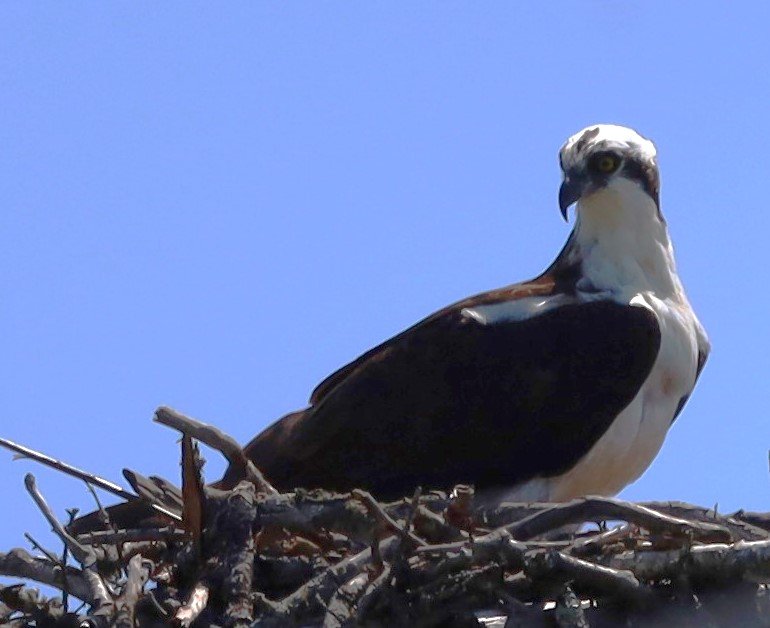The Goldfinch in Nature, Art, and Fiction.
An American Goldfinch (Spinus tristis) on the shore of Lake Ontario, July 2024. Unless otherwise noted, all images here are © John Degen
Back in early 2014, if you weren’t shifting a copy of Donna Tart’s soon to be Pulitzer-awarded novel, The Goldfinch, around your living space, you most definitely did not live in a bookish home. At over 750 pages in length, this bulky brick of paper was a reliable anchor for anything the wind might disturb, and its clever cover tearaway revealing a small painted bird drew the eye and intrigued the curiosity.
Image courtesy Little, Brown.
2014 was long before I got into birding, but I was hooked by that image nevertheless, and I remember looking up the referenced painting before I even opened the pages for the first time. What the cover carefully does not reveal is that the goldfinch in question is a prisoner. This is no wild goldfinch perched ever so briefly on an outside wall. It is chained and kept indoors as a pet. Now go read close to 800 pages if you wish to find out why that symbol is appropriate to Tartt’s story. No spoilers here.
The 1654 painting Het puttertje is by Dutch artist Carel Fabritius, and rather importantly was involved in a deadly explosion and then lost to the world for a period of time before being rediscovered far from where it was last seen. Again, read the book. It’s a smart pastiche of history in fiction.
Het puttertje, by Carel Fabritius, image courtesy the Mauritshuis.
What’s compelling to me about Tartt’s novel is her use of the bird-as-object to stand as multi-purpose and often oppositional touchstone. The bird is both joy and deep grief. It is at once freedom and confinement. At the hand of a master storyteller, this one creature has almost too many meanings. Or perhaps that’s just one reader’s meandering thought.
I am always gladdened at the sound of goldfinch calls on my birding walks, because they send me right back to 2014 when this little bird-on-a-book was an everyday sight in my life. 2014 was a good year. That was, for me, the last good year before “the troubles,” and so the sound of this bird is a moment of welcome emotional transportation.
I love how these beautiful finches twist themselves to get at the fruit of pinecones, and how the darkness of their feather base shows through the gold. Photo from 2023 in Etobicoke, Canada.
In the frigid early weeks of 2015, my small family became suddenly homeless when a huge water tank failed on the roof of our condo building in Etobicoke. Three quarters of the building’s suites were flooded out, including ours, and we were forced to store all our belongings and live for months in a downtown rental while insurance made the repairs. 2016 brought a serious and frightening health crisis to our family, followed year upon year by another and yet another, culminating, of course, in the great enshittening of the world in early 2020.
So, I hear a goldfinch and I am able to leap through time — but not in a simplistic, nostalgic way. More profoundly, back and forth, landing first back in 2014 and then squarely in a present where I have somehow come to terms with this last tumultuous decade, and can look to the future with something resembling optimistic acceptance.
The wild version of Fabritius’s bird. Captured, 2023 in Etobicoke, Canada.
Seeing a wild goldfinch is even more powerful for me. I find these birds ridiculously difficult to photograph. Flitty, nervous, and stand-offish, they are usually too far away, too protected by twigs and branches or simply moving too damn fast. I have MANY blurs of gold to admire in my collection, and quite a few very nice shots of where the damn bird was moments before I clicked the shutter. That flash of yellow through the branches is an avatar of both hope and deliverance for me, and when I actually manage to freeze it in my frame, I feel a little bit like I’ve captured a myth.
And these days, whenever I see a goldfinch I am almost always in the company of my little dog, Birdy. Talk about avatars of hope and deliverance. Really, one of the only good things to come out of the troubles was this perfect creature. Arriving in our house after the flood damage was repaired, and just weeks before the first terrifying diagnosis, Birdy the puppy demanded an emotional steadiness and physical thereness that might otherwise have been impossible to muster. In that way, she saved us. Golden.
The dog who arrived just in time to take on the troubles.
“And isn’t the whole point of things — beautiful things — that they connect you to some larger beauty?”
― Donna Tartt, The Goldfinch
It’s also a movie!






























